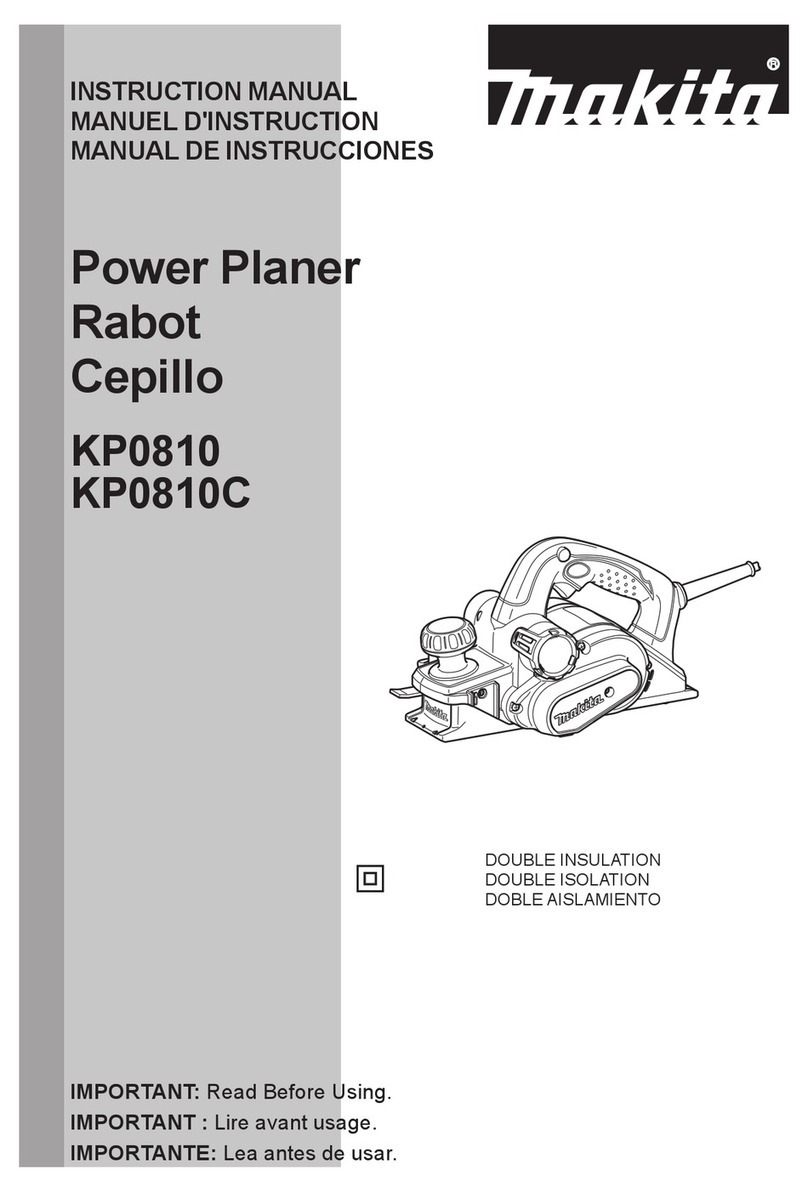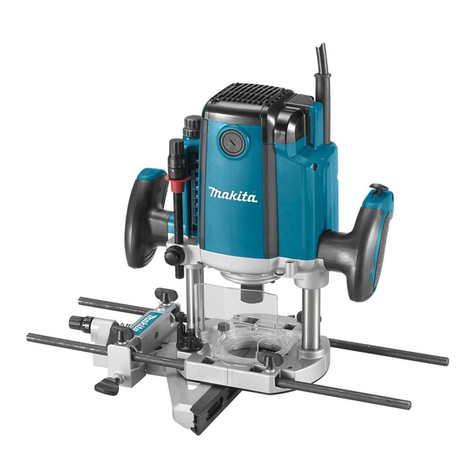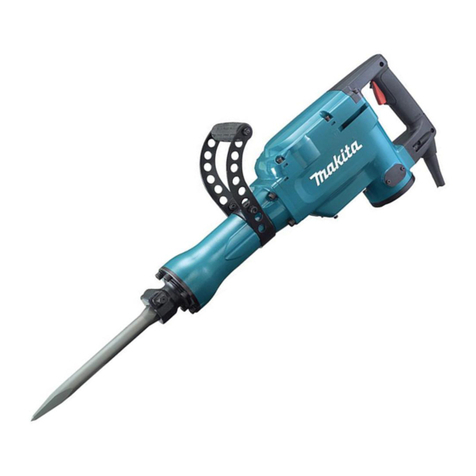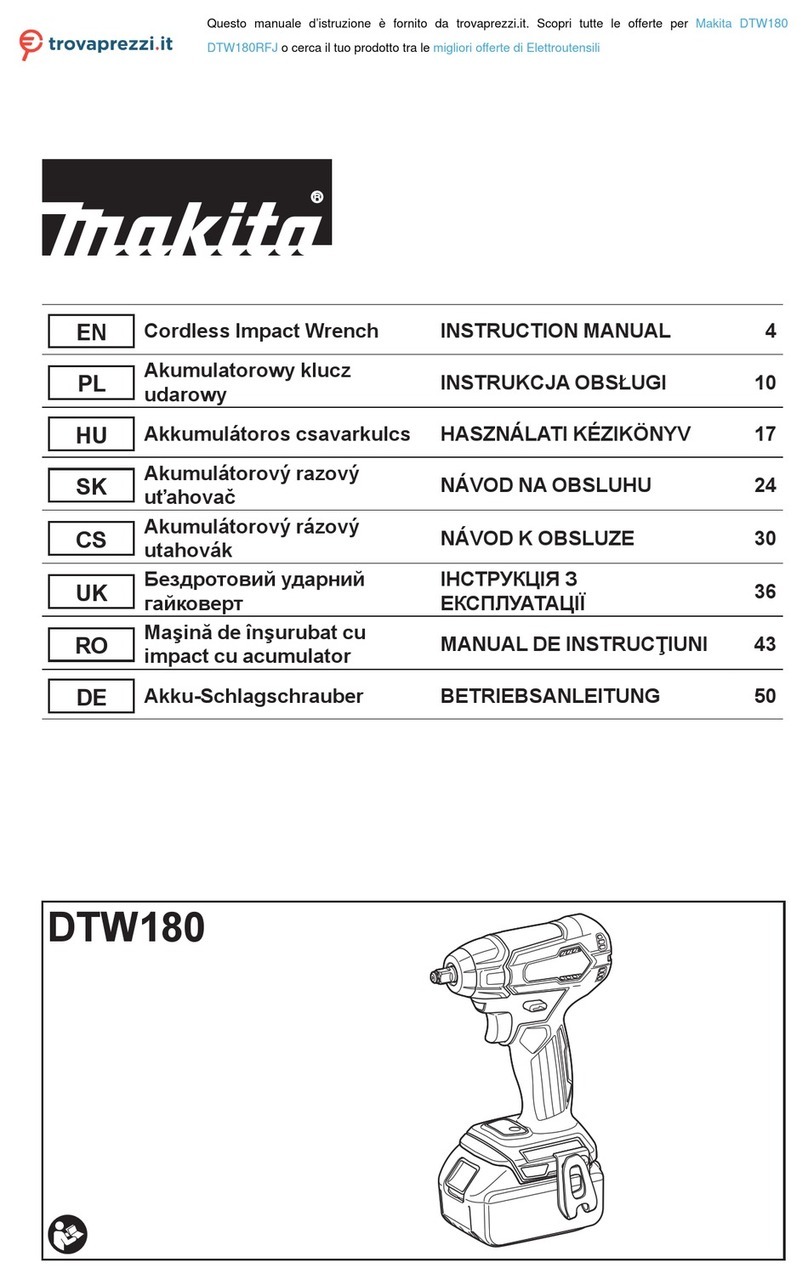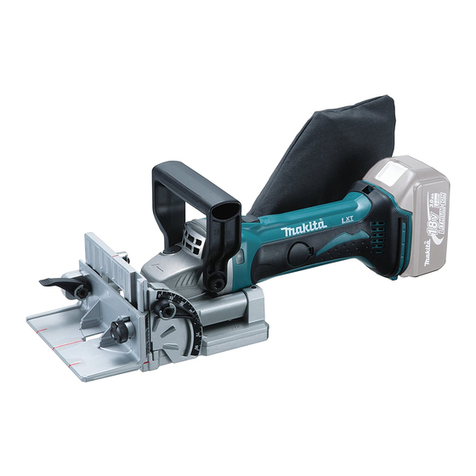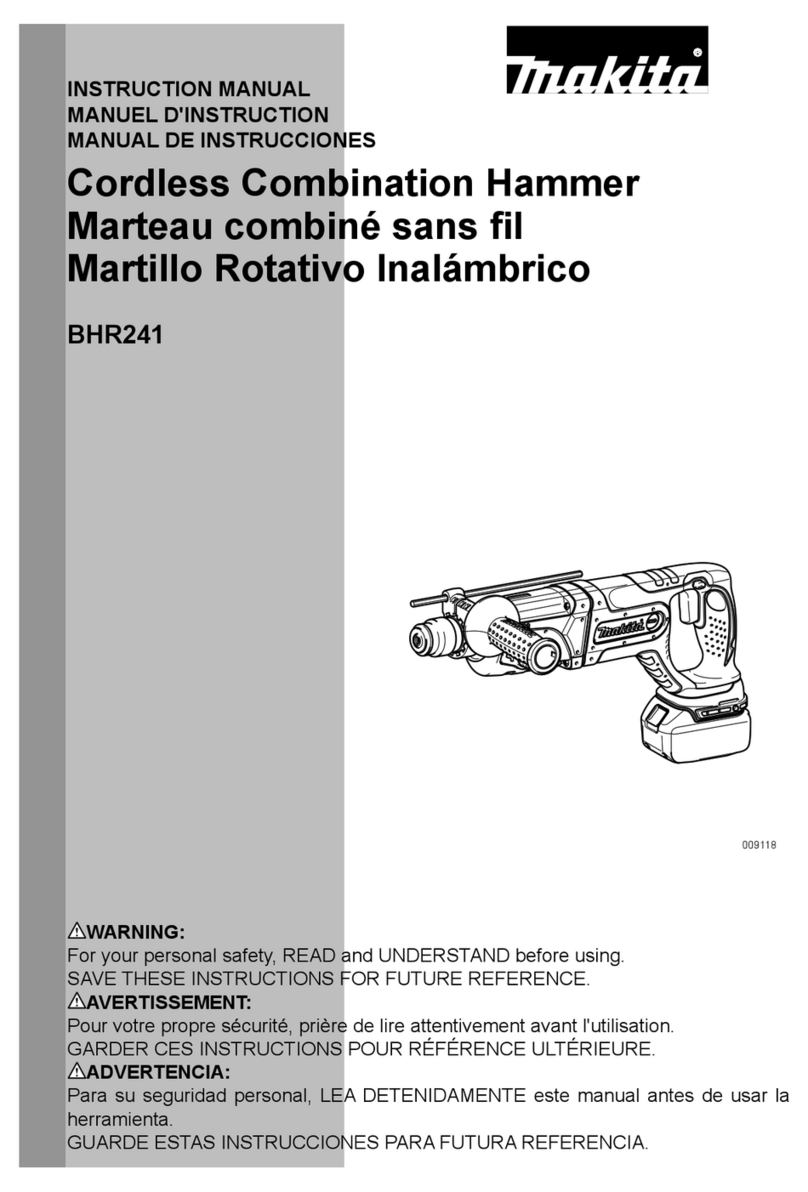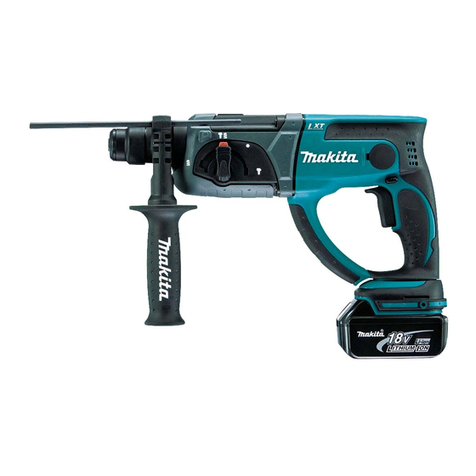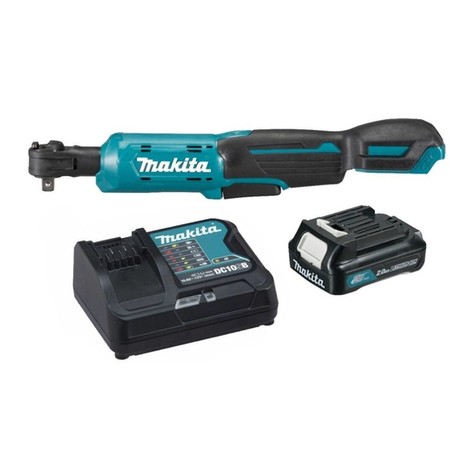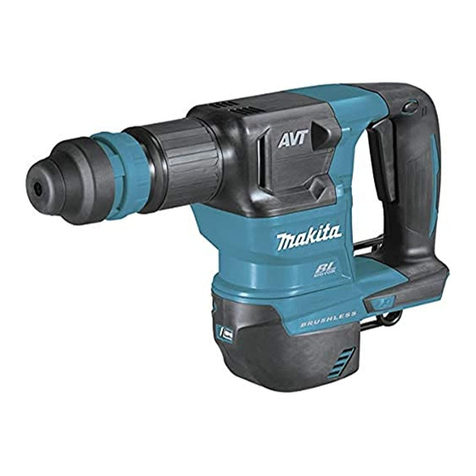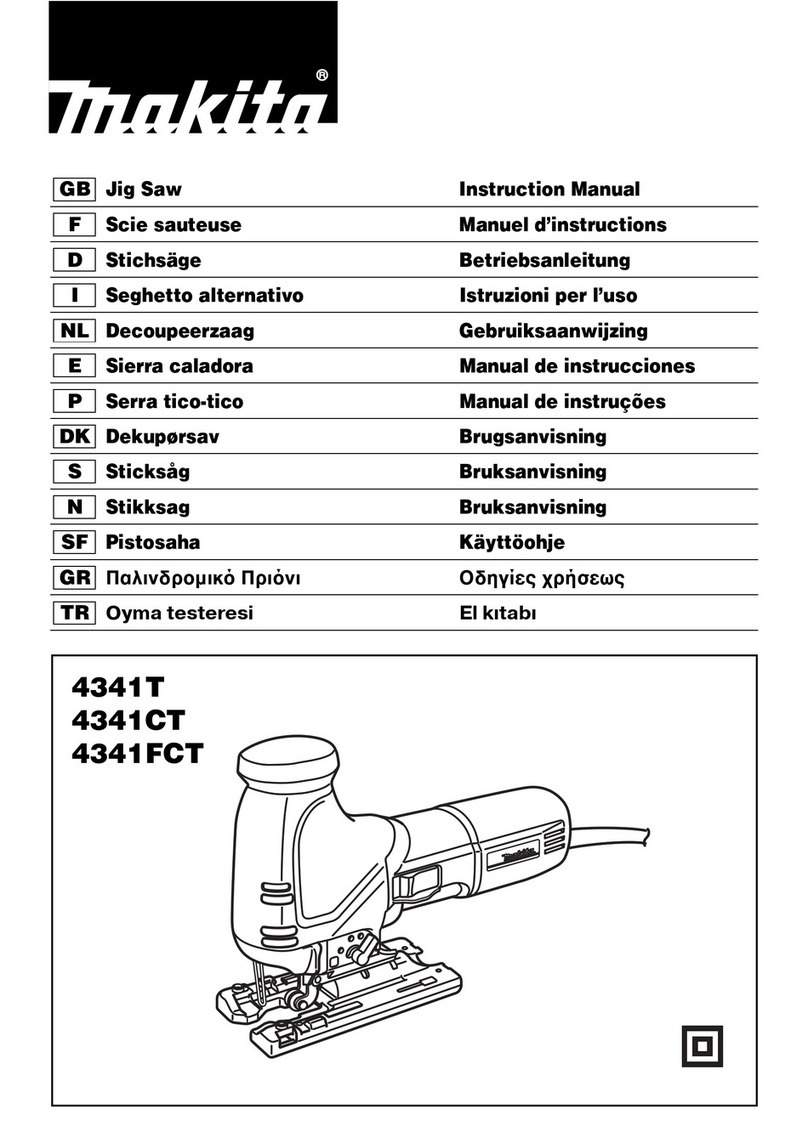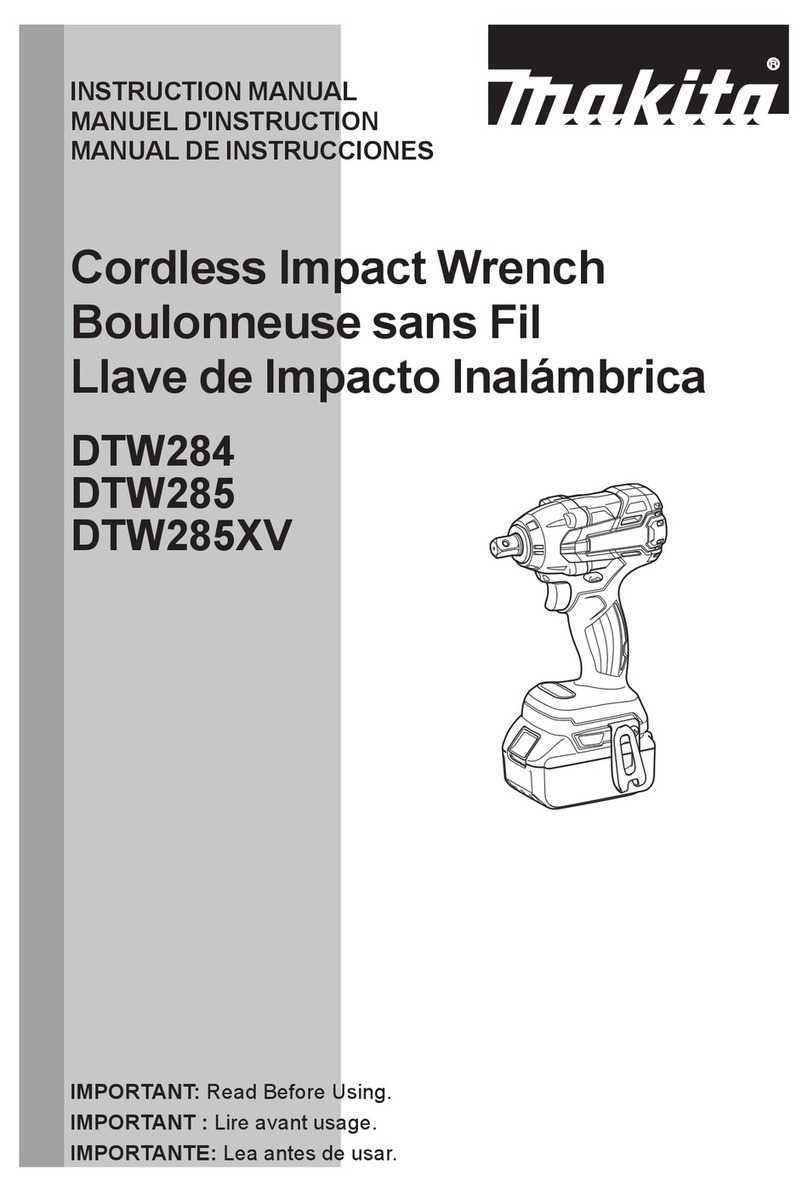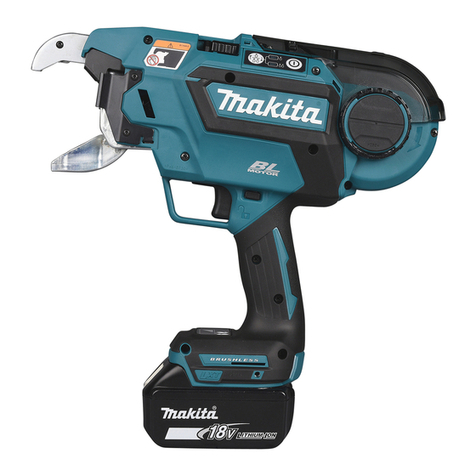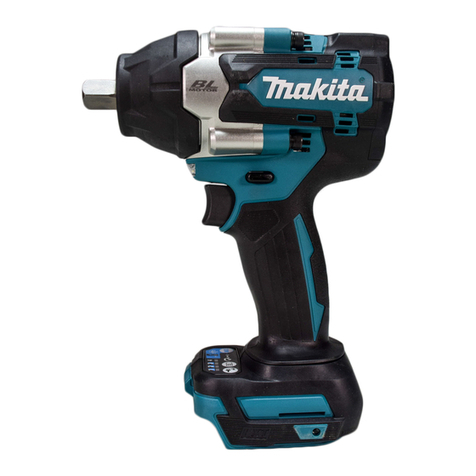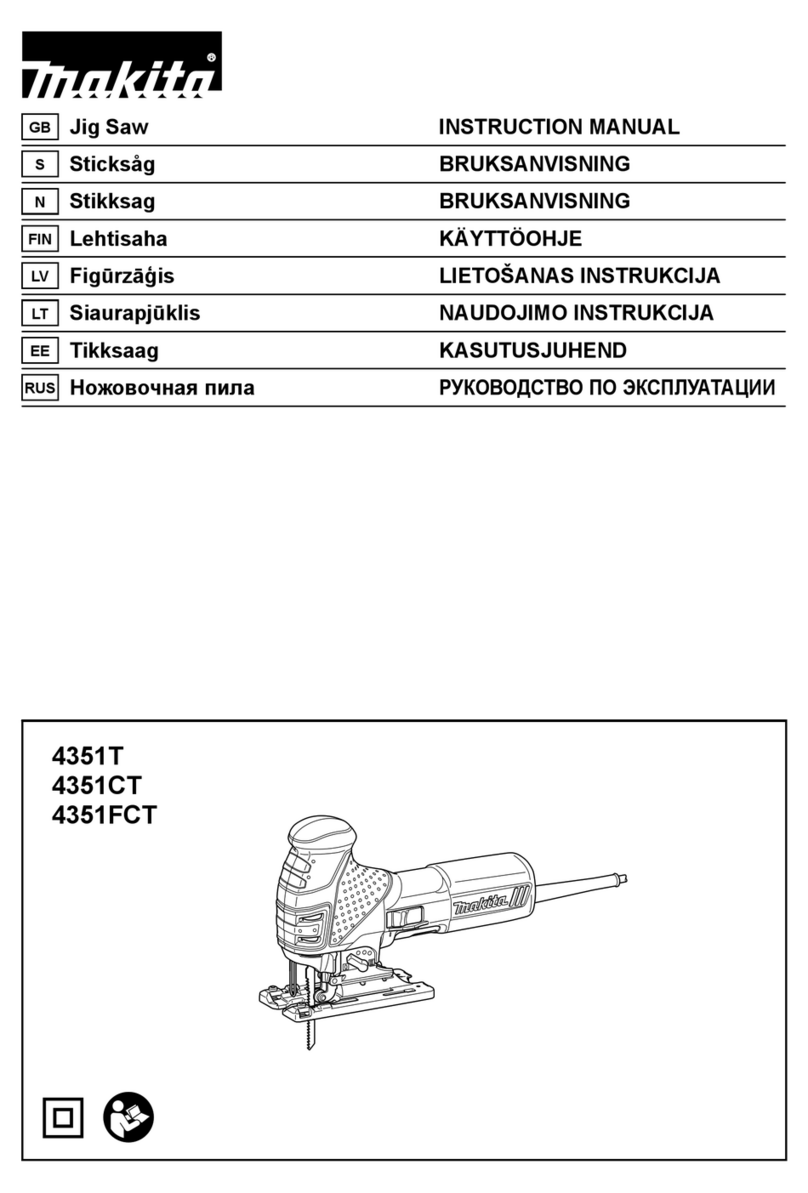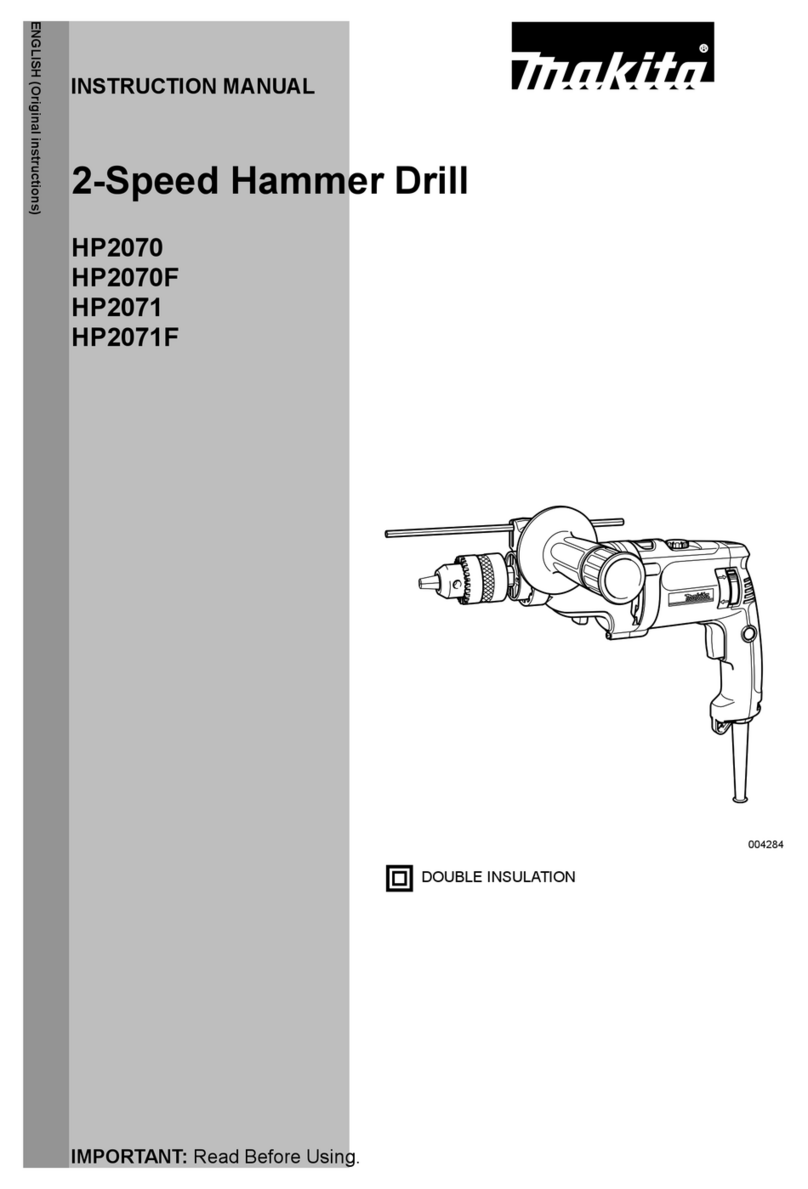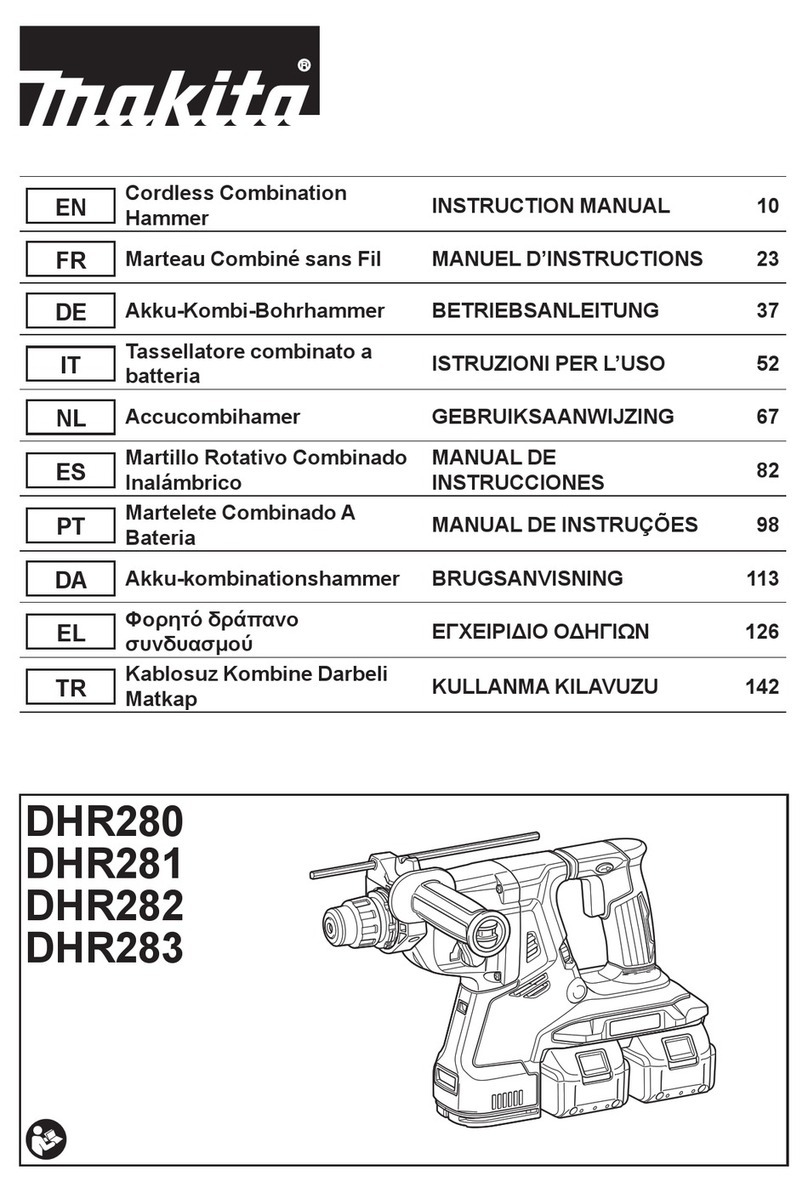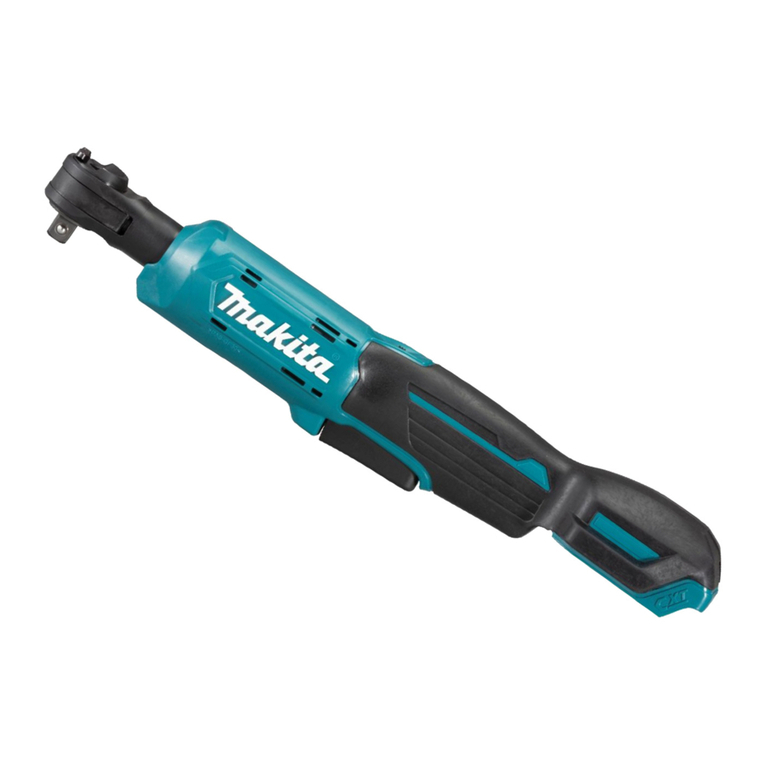PRODUCT
P 1/ 9
Model No.
Description
CONCEPT AND MAIN APPLICATIONS
BJS100, BJS101
Cordless Metal Shears 1.0mm (20Ga)
Specification
Standard equipment
Optional accessories
Center blade
Side blade (L)
Side blade (R)
Charger DC18SD
Charger DC18SE (for automobile cigarette lighter socket)
Charger DC24SC
Battery BL1430 (for BJS100 only)
Battery BL1830 (for BJS101 only)
Fast charger DC18RA
Note: The standard equipment for the tool shown above may vary by country.
Hex wrench 3 .................................... 1
These products are available in the following variations.
All models also include the accessories listed below in "Standard equipment".
Dimensions: mm (")
Width (W)
Height (H)
Length (L) 364 (14-3/8)
78 (3-1/16)
103 (4-1/16) 118 (4-5/8)
BJS100 BJS101
BJS101
Models BJS100 and BJS101 have been developed as sister models of
cordless straight shears BJS160 and BJS161.
BJS100 is powered by 14.4V/3.0Ah Li-ion battery BL1430, and BJS101
is powered by 18V/3.0Ah Li-ion battery BL1830.
Ability to cut curves with minimum cutting radius of 30mm (1-3/16”) is
obtained by mounting the blades of Model JS1670 on BJS160/ BJS161.
Note: 1.3Ah Li-ion battery BL1415/ BL1815 cannot be used for BJS100/ BJS101.
*Weight according to EPTA-Procedure 01/2003, including battery
Battery
Max cutting capacities:
mm (Ga)
Steel with tensile strength
up to 600N/mm2
Cell
Voltage: V
Capacity: Ah
Li-ion
14.4 18
3.0
Net weight*: kg (lbs) 1.9 (4.2) 2.0 (4.4)
0.7 (23)
Aluminum with tensile
strength up to 200N/mm22.5 (12)
Steel with tensile strength
up to 400N/mm21.0 (20)
No load speed: min-1=spm (strokes per minute) 4,300
Max output (W)
Minimum cutting radius: mm (") 30 (1-3/16)
Overload protection by current limiter Yes
280 350
Specification Model BJS100 BJS101
22 with DC18RACharging time (approx.): min.
BJS100RFE
BJS100Z
BJS100
Model No. Offered to
All countries
Mexico, Panama
All countries except the two listed above
BL1430
(Li-ion 3.0Ah) DC18RA
No No No
type quantity Charger
Yes
No
Plastic
carrying case
2 1
Battery Battery
cover
BJS101RFE
BJS101Z
BJS101
Model No. Offered to
All countries
Mexico, Panama
All countries except the two listed above
BL1830
(Li-ion 3.0Ah) DC18RA
No No No
type quantity Charger
Yes
No
Plastic
carrying case
2 1
Battery Battery
cover
BJS100
BJS101
T
ECHNICAL INFORMATION
L
H
W
BJS100
